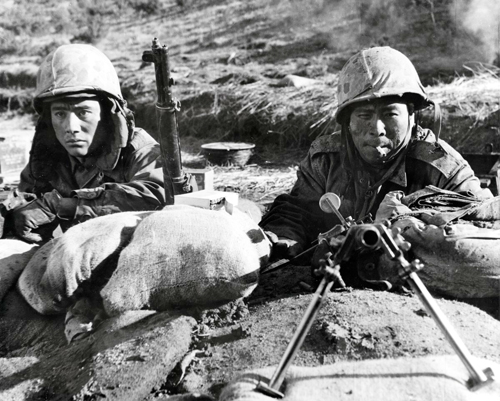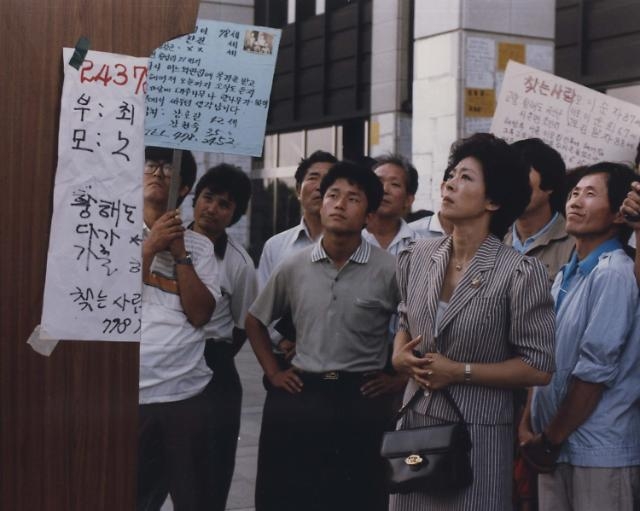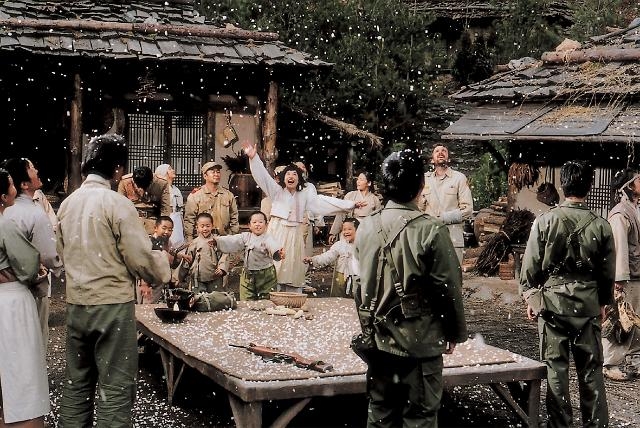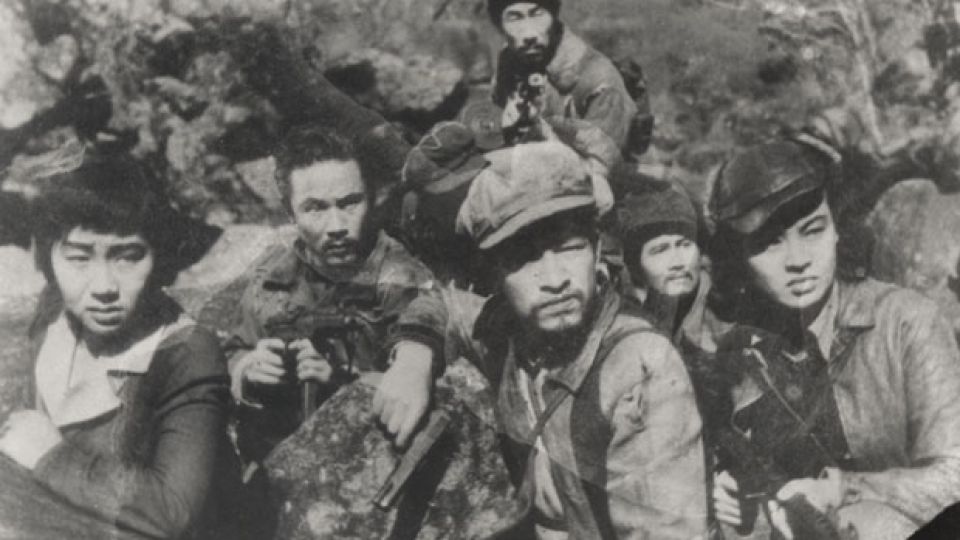June 25, 2025
SEOUL – Wednesday marks the 75th anniversary of the Korean War, one of the most deeply felt tragedies in Korea’s modern history. With the peninsula technically remaining at war, it’s a fitting moment to look at how cinema has grappled with this enduring wound.
Korean War films reveal how representations of the conflict have transformed across eras, shaped by shifting political climates and national perspectives. Each era produced its own version of the war, filtered through the anxieties of the moment and driven by the peculiar demands of its time.
In July 27, 1953, the Korean War ended in a bloody stalemate. The film industry, like everything else, lay in ruins. Syngman Rhee’s anticommunist authoritarian regime had yet to figure out how to wield cinema as a tool of ideological control.
The first post-war efforts bear little resemblance to what we’d expect from war films today. Many steered clear of battlefield spectacle and instead probed more intimate forms of conflict: families torn apart, neighbors turned informants, the specter of infiltration from within. Some critics argue this reflected the collective trauma of a war that had hit too close to home. But a simpler explanation might be that limited budgets and technical constraints made it difficult to bring large-scale battle scenes or realistic combat to life.
One film that stands apart is Lee Kang-chun’s “Piagol” (1955), which sparked immediate outcry for daring to follow a North Korean partisan unit trapped in the Jiri Mountains after the armistice. Rather than portraying the communist guerrillas as one-dimensional villains, the film presents them as complex individuals grappling with internal conflict and moral uncertainty.
That apparently humanizing approach drew sharp condemnation from the authorities and conservative commentors, who demanded clear lines between friend and foe. Censors were particularly unsettled by the film’s ending: when the guerrilla’s only survivor, Ae-ran (played by No Kyung-hee), walks alone onto a beach, the ambiguous staging left unclear whether she was surrendering to South Korean forces or simply expressing despair at the futility of continued resistance.
When the government pulled the film from theaters, Lee threw in a South Korean flag at the end to make Ae-ran’s surrender and change of heart crystal clear.
Meanwhile, American studios scrambled to make sense of the latest conflict in the Far East.
When the war erupted in June 1950, Hollywood was still busy cranking out World War II epics. That conflict had a clear narrative arc: good versus evil, and a victory that made all the sacrifice feel earned. Korea, by contrast, offered no such closure — no victory to justify suffering, no heroes to welcome home.
What eventually took shape was a cinematic trend scholar Daniel Kim terms “humanitarian Orientalism”: a wave of films that presented white Americans as benevolent saviors while reducing Koreans as infantile objects in need of rescue and moral guidance from the West.
“One Minute to Zero” (1952) channeled this notion through its central moral dilemma. Robert Mitchum’s Colonel Janowski orders artillery strikes on refugee columns suspected of harboring North Korean infiltrators. While the scenes unfold with unflinching brutality, with set pieces intercut with real footage of fleeing civilians, the film’s ultimate drama rests squarely on Mitchum’s inner turmoil and his girlfriend’s gradual acceptance of the war’s harsh imperatives. As such, Korean civilian deaths are framed as unfortunate but justifiable collateral damage in the white protagonists’ deeply personal humanitarian quest.
“Battle Hymn” (1957) followed a similar formula. Here, Rock Hudson’s Colonel Dean Hess takes in Korean orphans even as he carries out deadly bombing missions. The film blurs the line between humanitarian rescue and military strategy, portraying the act of saving orphans as a way to keep them away from communism. In so doing, it reveals the biopolitical logic of American intervention: some Korean lives deserve protection, while others constitute acceptable losses. Recurring Christian imagery provides the unifying thread for this mission, casting both the killings and the savings with divine sanction.
Following military strongman Park Chung-hee’s 1961 coup, anticommunist films emerged as a full-fledged genre. The government inserted itself into every stage of film production — from funding to scriptwriting and marketing — to advance its anti-North Korean agenda and shore up its grip on power. The Motion Picture Act, first passed in 1962 and revised four times over the decade, handed almost unchecked authority to censors. By 1970, the law offered exclusive import quotas for foreign films to producers of anticommunist content — a carrot-and-stick measure that effectively homogenized the cinematic landscape.
Some filmmakers paid heavily for supposed missteps. Acclaimed director Lee Man-hee was arrested in 1965 for his film “Seven Female Prisoners of War,” accused of showing sympathy for North Korean characters in his portrayal of female captives who develop complex relationships with their North Korean captors.

“The Marines Who Never Returned.” PHOTO: KOREAN FILM ARCHIVE/THE KOREA HERALD
But the system also paved the way for unprecedented production value. With government backing came access to real military hardware, bigger budgets, and professional-grade combat scenes that brought the intensity of the battlefield vividly to the screens. Films like Lee Man-hee’s “The Marines Who Never Returned” (1963) and Shin Sang-ok’s “Red Scarf” (1964) became Korean cinema’s first-ever true war epics. “Red Scarf” even featured real bombers dropping live ordnance — a spectacle that could go toe-to-toe with Hollywood blockbusters of the time.
Perhaps the most telling example of artistic compromise under state control during this period is Im Kwon-taek’s “Testimony” (1973). This sprawling epic focuses on the early stages of the Korean War, with massive troop movements filling nearly every frame — a showcase of just how far the military would go to support filmmakers who toed the line.
Im, who would go on to become one of Korea’s most celebrated directors, later admitted his misgivings about the project; he was handed a government-written script and kept under close watch during production. The result feels oddly disjointed, with plotlines that never quite come together and character arcs that seem to push back against the film’s own ideological agenda — almost as if the film is sabotaging itself in defiance of the very propaganda it was meant to serve.
The 1980s ushered in a new military dictatorship with a markedly different approach to cultural control. Chun Doo-hwan’s regime, even as it maintained a tight authoritarian grip, rolled out the “3S Policy” — sex, sports, and screen — using mass entertainment as a tool to steer attention away from political unrest. Domestic screens were flooded with erotic films, while Hollywood imports and other foreign productions made deeper inroads into the market. For many, it was the beginning of Korean cinema’s dark age.

“Gilsotteum.” PHOTO: KOREAN FILM COUNCIL/THE KOREA HERALD
One film broke through the fog: Im Kwon-taek’s “Gilsotteum” (1985), which brought stories of separated families to the forefront. Inspired by a popular TV program that reunited families torn apart by the Korean War, the film follows former spouses Hwa-young (Kim Ji-mee) and Dong-jin (Shing Seong-il), who reconnect after three decades and set out to find their lost son. Through their search, Im explores the emotional toll of division, using the couple’s rekindled bond to explore deeper themes of loss, memory, and reconciliation.
“Gilsotteum” broke away from the rigid, state-driven narratives that had defined Im’s earlier war films, opting instead for a deeply human story of resilience and longing. It marked a turning point not just in Im’s career, but in Korean cinema as a whole. In the 1990s, Im would go on to direct masterpieces like “Sopyonje” (1993), solidifying his status as Korea’s most important filmmaker. He would also take on the Yeosu-Suncheon rebellion — a left-wing uprising and brutal state crackdown that foreshadowed the Korean War — in “The Taebaek Mountains” (1994).
Korean cinema’s renaissance coincided with the country’s democratic transition and a thaw in inter-Korean relations. The so-called New Korean Cinema of the mid-to-late ’90s brought together cutting-edge technology, growing international recognition and unprecedented box office success at home.
Many of the era’s most iconic blockbusters engaged directly with the wounds of division and ongoing ideological conflict — whether through high-stakes espionage thriller featuring North Korean agents (“Shiri”), unlikely friendship between soldiers stationed at the border (“JSA”), or historical drama about South Korean convicts trained to infiltrate North Korea (“Silmido”).
These films were largely shaped by the political climate of the time. President Kim Dae-jung’s Sunshine Policy promoted engagement with North Korea, and the 2000 inter-Korean summit stirred up real optimism about the possibility of reunification. War films from this period leaned into that hopeful mood, favoring melodrama and even comedy over militarism. The Korean War came to be portrayed less as a battle of ideology and more as a fratricidal tragedy — a conflict in which everyone was a victim and war itself the ultimate villain.
“Taegukgi: The Brotherhood of War” (2004) embraces this melodramatic turn through big-budget spectacle and crowd-pleasing sensibility. Director Kang Je-gyu, fresh off the success of “Shiri,” delivers a bona fide wartime blockbuster starring A-list actors Jang Dong-gun and Won Bin. Centered on two brothers torn apart by war, the film reframes history by shifting focus from North Korean aggression to the brutal internal dynamics of wartime South Korea — arbitrary conscription by military officials and violent crackdowns by right-wing militias and anticommunist thugs are repeatedly shown to be more immediate threats facing the protagonists than the war itself.

“Welcome to Dongmakgol.” PHOTO: KOREAN FILM COUNCIL/THE KOREA HERALD
“Welcome to Dongmakgol” (2005) pushed boundaries even further, using lighthearted comedy to reimagine the war through a dreamlike, utopian lens. The film follows North and South Korean soldiers who stumble upon an isolated mountain village untouched by the outside world. As they settle into this haven, old enmities fade — until American bombers arrive and threaten their peace. In a striking reversal, former enemies band together to defend innocent villagers.
The film’s subtle but provocative framing — portraying the two Koreas as victims of U.S. military violence — drew sharp criticism from conservative commentators, who accused it of pushing an anti-American agenda under the guise of anti-war messaging. Still, “Welcome to Dongmakgol” became one of the year’s biggest hits, notable for how it captured the hope for reconciliation and reunification that defined the era.
The election of conservative governments in the 2010s rekindled tensions in the Korean Peninsula and brought renewed hostility toward North Korea. Korean War films followed suit, reverting to the demonizing portrayals and patriarchal militarism of the earlier decades. Films like “Into the Fire” (2010) and “Northern Limit Line” (2015) exemplified this turn in their portrayal of North Koreans as ruthless, one-dimensional enemies.
State involvement in cultural production became particularly pronounced under the Park Geun-hye administration (2013–2017). Filmmakers seeking support from state-controlled funds — which backed up to 40 percent of domestic films annually — found that access was largely limited to projects aligned with right-leaning narratives on military security.
Following Park’s ouster over corruption scandals, investigations revealed Park had directly pressured CJ Group’s chairman to produce nationalistic films that aligned with the government’s agenda. These coercion efforts resulted in works like “Ode to My Father” (2014) and the Korean War epic “Operation Chromite” (2016), both by CJ’s film production division CJ ENM, that closely followed the state’s preferred narrative about modern Korean history.
“Operation Chromite” offers a particularly revealing case: A war epic built on a stark good-versus-evil framework, with Liam Neeson playing Gen. Douglas MacArthur in what amounts to a high-tech rebranding of 1960s anticommunist propaganda. Based on MacArthur’s amphibious landing at Inchon — the surprise maneuver that turned the tide against North Korea during the war’s opening months — the film follows a South Korean intelligence team as they infiltrate enemy lines to gather critical intel for the US-led counteroffensive.
While “Operation Chromite” boasts impressive production values, its technical sheen cannot disguise its dramatic shortcomings. Characters remain thinly drawn, dialogue is wooden, and narrative tension dissipates through the painfully predictable plot. Its failings reveal a basic truth about ideological filmmaking: propaganda still needs craft to get its point across.


